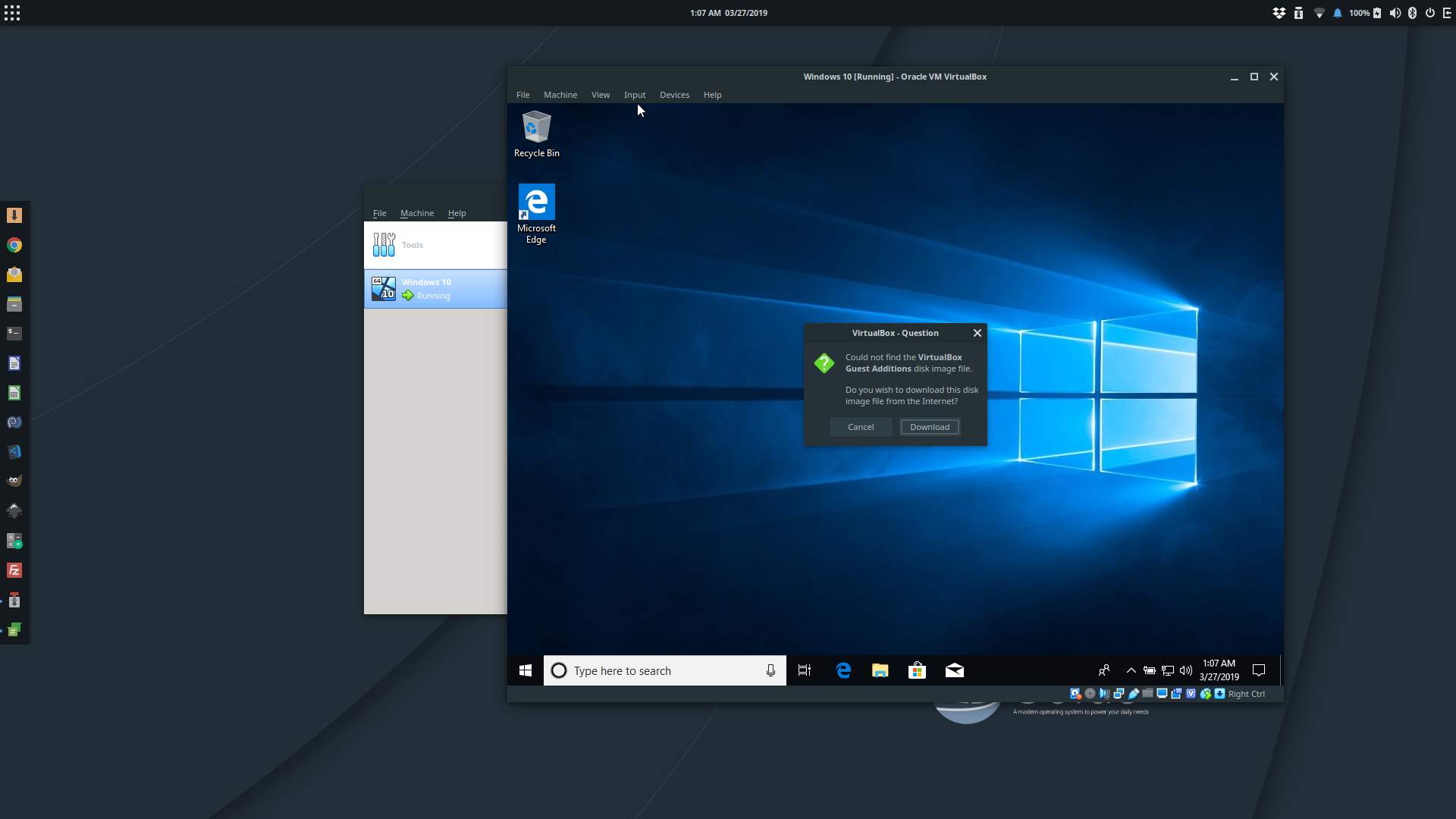

- #Virtualbox windows 10 image how to#
- #Virtualbox windows 10 image install#
- #Virtualbox windows 10 image full#
- #Virtualbox windows 10 image iso#
#Virtualbox windows 10 image install#
So, it is recommended to choose “ Normal Installation” moreover, if you want to download and install the updates during installation, check the option “ Download updates while installing Ubuntu”. The next step is about the keyboard layout choose your preferred layout and click on “ Continue” to move to the next step.Īfter that, the next phase is about the “ Updates and other software” you can go for Normal Installation or Minimal Installation: normal installation contains complete support for Ubuntu packages, while the latter option will install only basic utilities of Ubuntu.
#Virtualbox windows 10 image iso#
The time you start your machine after loading the Ubuntu ISO image you will see the Ubuntu Interface, and there are two options here “ Try Ubuntu” and “ Install Ubuntu” also choose the appropriate language for this installation package it can be selected from the column displayed on the left side of the window, as in our case we have chosen “ English” Now, click on “ Install Ubuntu” to proceed with the installation:

Till this time, we have not added an image of Ubuntu when you start the machine, it will ask you to add the image: Click on the choose folder icon to select the folder that contains the image of Ubuntu.Īfter that, a window will open that contains several options click on the “ Add” icon to add the image:Īfter clicking on “ Add,” load the image where you have downloaded it click on choose to continue:Īfter that, the image of Ubuntu will be loaded, and click on “ Start” to proceed further: The time you click on “ Create,” you can observe a new machine is created with the customized settings: Click on “ Start” to run the machine. Moreover, if you want more space after installation, you can increase the size of the virtual disk after installation. It would be beneficial to dynamically allocate because this option will only use space once it is filled up:Īfter that, select the size of the hard disk you want to dedicate to this machine. You can choose the space allocation type of the virtual disk on your hard drive there are two options, dynamic allocation or fixed size. In the next step, you have to choose the hard disk type for the machine: select the VDI (VirtualBox Disk Image) and click on “ Next” to proceed to the next step: The next option is to add a virtual hard disk to your new machine: choose the radio button that is named “ Create a virtual hard disk now” and click on “ Create” to continue: Click on “ New” to create a new machine for your host operating system:Īfter that, it will ask you to dedicate the amount of memory (RAM) for your machine it is recommended to allocate 4GB for better performance, although you can choose the memory size as per your availability:
#Virtualbox windows 10 image how to#
How to create a new machine in VirtualBoxįirstly, you must open the VirtualBox, and you will notice few options available inside. This section contains a step-by-step procedure to install Ubuntu on VirtualBox majorly, this section consists of several steps that lead to a successful installation. How to install Ubuntu on Windows using VirtualBox

To install Ubuntu, the ISO image of Ubuntu is mandatory to be placed on the hard drive of your Host PC.
#Virtualbox windows 10 image full#
This article focuses on the installation of Ubuntu on windows ten or VirtualBox it is to note that you can get full access to Ubuntu if installed using virtual tools on the other hand, WSL provides only CLI. Several virtualization tools such as VirtualBox or VMware enable the users to operate their computers on two operating systems simultaneously. Virtualization tools enable you to install any operating system without affecting the primary OS. Microsoft Windows presents a feature Windows Subsystem for Linux (WSL) with the help of this feature, it is possible to use the command line terminal of several Linux distros on Windows 10. You have two ways to get access to distros of Linux one way is using WSL, and the other way is to use any virtualization tool. One can install Ubuntu on their computer machines, or virtualization tools can be used to access Ubuntu’s features.


 0 kommentar(er)
0 kommentar(er)
